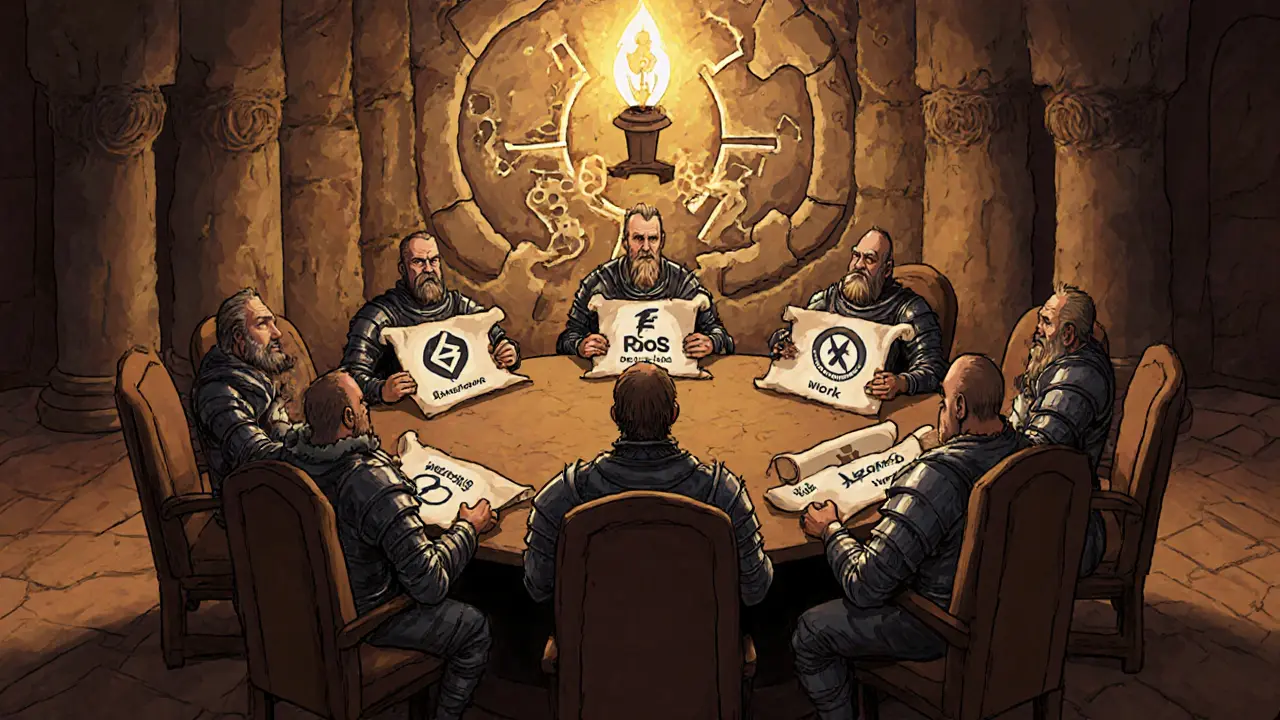Consensus Algorithms: How Blockchains Reach Agreement
When working with consensus algorithms, the rules that let a distributed network decide on a single, trusted version of data. Also known as consensus mechanisms, they are the backbone of any blockchain that wants to stay decentralized and secure. Without them, nodes would constantly disagree, and the whole system would collapse. Consensus algorithms encompass a range of approaches, each tackling the same problem in a different way.
Key Types of Consensus Algorithms
The most common family starts with Proof of Work (PoW), a method where miners solve cryptographic puzzles to add a block. It demands real computational power, turning energy consumption into a security guarantee. PoW shows how work can be used as a stake, and it directly influences block reward economics.
Next up is Proof of Stake (PoS), a system where validators lock up tokens as collateral and are chosen to propose blocks proportionally to their stake. PoS replaces raw electricity with financial risk, making attacks costly in terms of locked capital. This shift often leads to faster transaction finality and lower fees.
Another powerful approach is Byzantine Fault Tolerance (BFT), a class of algorithms that can reach consensus even when some nodes act maliciously or fail. BFT methods like Practical BFT or Tendermint let a small set of validators quickly agree on a block, which is why many permissioned blockchains prefer them.
All three—PoW, PoS, and BFT—share a core goal: they enable a distributed ledger to maintain integrity without a central authority. In other words, consensus algorithms require trust in math rather than trust in people. This principle connects directly to blockchain security, because the strength of the algorithm dictates how hard it is for an attacker to rewrite history.
Beyond the pure tech, these mechanisms affect real‑world decisions. For investors, knowing whether a project uses PoW or PoS can hint at future energy costs, token inflation, and governance models. Developers pick BFT when they need instant finality for high‑frequency applications like decentralized finance or supply‑chain tracking. In short, the choice of consensus algorithm shapes the entire ecosystem around a blockchain.
Below you’ll find a curated set of articles that dive deeper into each of these topics, from beginner‑friendly guides on how PoW mining works to advanced analyses of PoS validator economics and BFT security proofs. Use the collection to see how consensus algorithms play out across airdrops, exchange security, tokenomics, and more. Ready to explore? Let’s jump into the posts that unpack the details and show you how these mechanisms power the crypto world today.
How Consensus Algorithms Evolved to Power Modern Blockchain
Explore how consensus algorithms have evolved from Bitcoin's Proof of Work to modern hybrid and low‑energy solutions, and learn which is best for your blockchain project.





